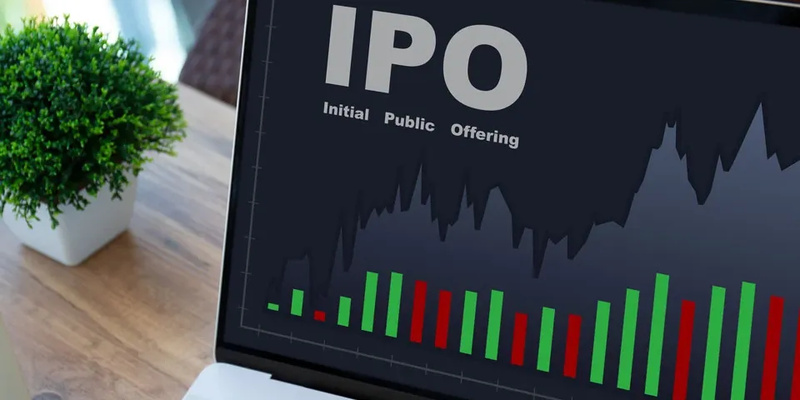Unveiling the Reliability of P/E Ratios: A Guide for Investors
Investors often rely on various metrics to gauge a stock's attractiveness in the ever-evolving investment landscape. The Price-to-Earnings (P/E) ratio is among the most widely used and debated indicators. At its core, the P/E ratio provides a snapshot of how much investors are willing to pay per dollar of earnings generated by a company.
However, the question remains: Can investors trust the P/E ratio as a reliable measure of a stock's value? Let's explore this inquiry and the P/E ratio's intricacies, reliability, and limitations in guiding investment decisions.
Understanding the P/E Ratio:
Understanding its essence is crucial before delving into the reliability of the P/E ratio. Calculated by dividing the current market price of a stock by its earnings per share (EPS), the P/E ratio quantifies the relationship between the stock price and the company's earnings. A high P/E ratio often signifies that investors are willing to pay a premium for anticipated future growth, reflecting optimism.
Conversely, a low P/E ratio might indicate undervaluation or skepticism regarding the company's prospects, potentially signaling caution among investors. This metric is a valuable gauge for investors seeking insights into market sentiment and potential investment opportunities.
Reliability of the P/E Ratio:
Many investors consider the P/E ratio a convenient tool for evaluating a stock's attractiveness. Its simplicity and widespread use make it appealing to novice and seasoned investors. However, the reliability of the P/E ratio hinges on several factors that investors must consider.
Interpreting Historical Performance:
The reliability of the P/E ratio rests on its ability to provide insights into a company's historical performance. By comparing the current market price to past earnings, investors can gauge the stock's valuation relative to its historical trends.
This historical context offers valuable perspective, allowing investors to assess whether the stock is trading at a premium or discount compared to its historical norms. However, it's important to note that past performance does not indicate future results, and relying solely on historical P/E ratios may overlook changes in the company's fundamentals or industry dynamics.
Industry-Specific Considerations:
One key factor influencing the reliability of the P/E ratio is its variation across different industries. Each industry has its own set of growth rates, risk profiles, and capital structures, leading to varying P/E ratios.
For instance, technology companies often command higher P/E ratios due to their potential for rapid innovation and growth. In comparison, utilities typically have lower P/E ratios due to their stable but slower growth nature. Therefore, comparing the P/E ratios of companies within the same industry provides more meaningful insights than cross-industry comparisons.
Cyclical Nature of Earnings:
The cyclicality of earnings poses challenges to the reliability of the P/E ratio, particularly for companies operating in cyclical industries. During economic downturns, companies in cyclical sectors may experience depressed earnings, leading to inflated P/E ratios that do not accurately reflect the company's long-term value.
Conversely, in periods of economic expansion, these companies may report robust earnings, resulting in deflated P/E ratios that may mask underlying risks. As such, investors should be mindful of the cyclical nature of earnings when interpreting the P/E ratio and consider adjusting for economic cycles accordingly.
Earnings Quality and Adjustments:
Another aspect influencing the reliability of the P/E ratio is the quality of earnings and the need for adjustments. Non-recurring items, such as one-time gains or losses, can distort the P/E ratio and mislead investors about the company's true earnings power.
Adjusting for these non-recurring items accurately reflects the company's ongoing profitability and sustainable earnings potential. Additionally, accounting practices and policies can vary among companies, affecting the comparability of P/E ratios. Therefore, investors should scrutinize earnings quality and make necessary adjustments to enhance the reliability of the P/E ratio as a valuation metric.

Limitations of the P/E Ratio:
While the P/E ratio offers valuable insights into stock valuation, investors should know its limitations.
Lack of Qualitative Factors Consideration:
While the P/E ratio offers a straightforward way to evaluate stock valuation, its primary limitation lies in its inability to account for qualitative factors. Management quality, competitive advantages, and industry dynamics determine a company's long-term success.
However, disregarding these critical qualitative aspects, the P/E ratio solely focuses on earnings and stock price. As a result, a low P/E ratio may not necessarily indicate an attractive investment opportunity if the company faces structural challenges or needs a competitive edge.
Inability to Capture Non-Recurring Events:
Another limitation of the P/E ratio is its failure to consider non-recurring items and extraordinary events that may impact a company's earnings. One-time expenses or windfall gains can distort the P/E ratio, leading to inaccurate assessments of a company's profitability and prospects. Investors relying solely on the P/E ratio may need to pay more attention to these exceptional circumstances, resulting in flawed investment decisions.
Neglect of Capital Structure:
Furthermore, the P/E ratio overlooks a company's capital structure, which can significantly affect its risk profile and financial health. Two companies with identical P/E ratios may have vastly different debt levels, influencing their ability to generate earnings and withstand economic downturns.
Ignoring the capital structure can mask underlying financial risks and distort a company's true valuation. Therefore, investors must complement their analysis by examining a company's debt levels, interest coverage, and overall financial stability.

Conclusion:
In conclusion, while the Price-to-Earnings (P/E) ratio remains a popular metric for evaluating stock valuation, its reliability is contingent upon various factors. Investors should recognize that historical performance, industry dynamics, earnings cyclicality, and earnings quality significantly influence the interpretation of the P/E ratio.
Moreover, the P/E ratio's limitations, including its disregard for qualitative factors, inability to capture non-recurring events, and neglect of capital structure, underscore the need for a comprehensive approach to investment analysis. By acknowledging these nuances and supplementing P/E ratio analysis with qualitative assessment and financial diligence, investors can make more informed investment decisions in navigating the complexities of the market












